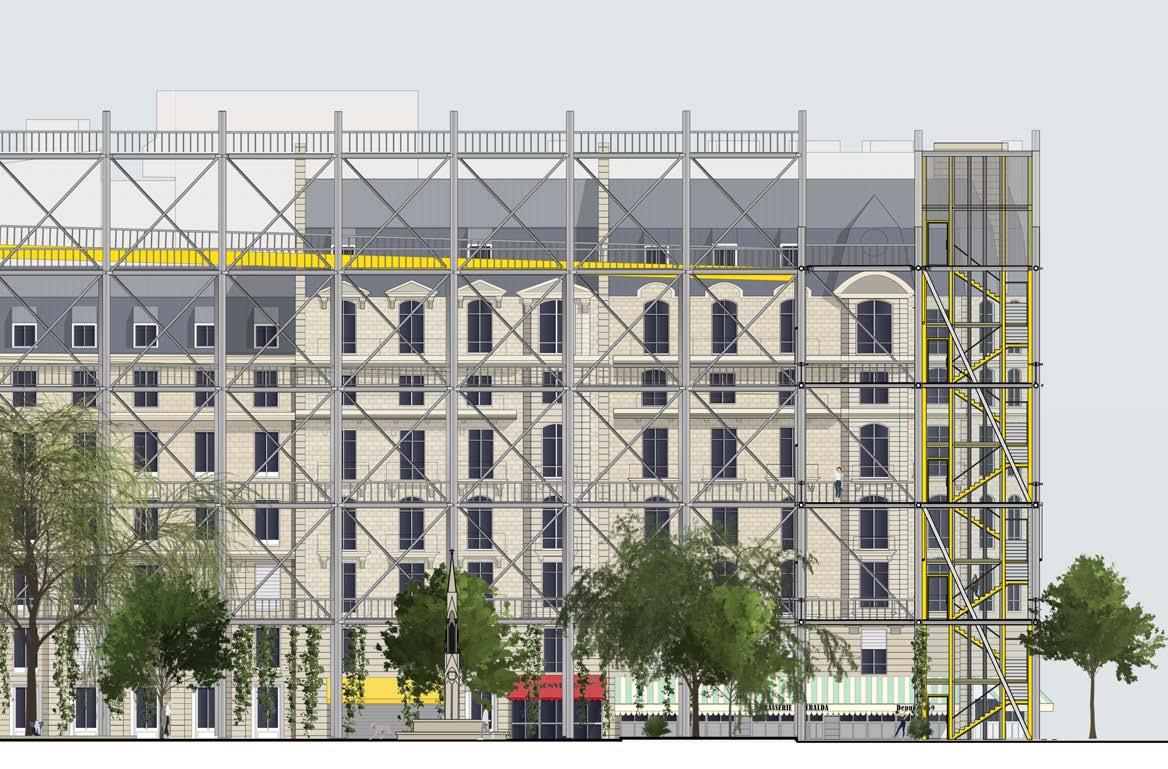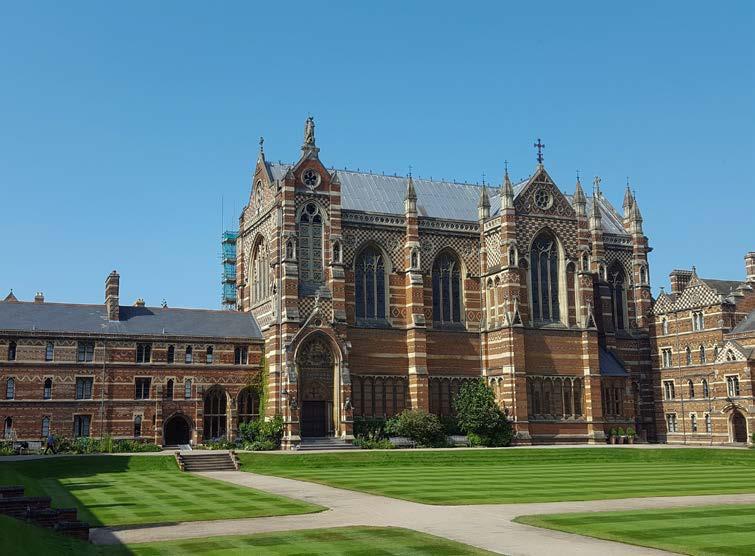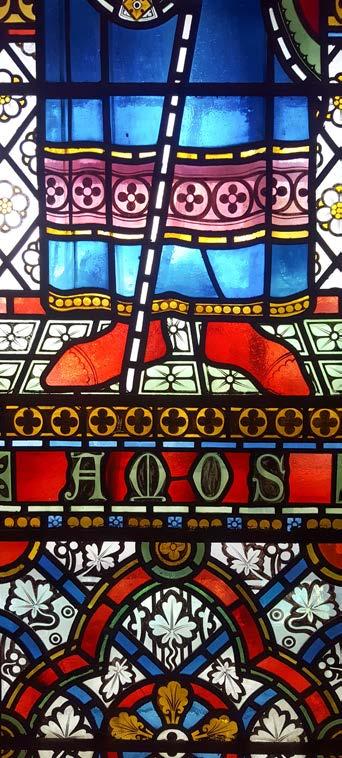
1 minute read
Cathedral Garden
The Garden was inspired by the Garden of St Dunstan in the East, in the City of London. This uses the ruined walls of a bombed out church to create a sheltered green space that feels totally removed from the city. I wanted to use the scaffold columns to create a similar atmosphere

Advertisement
During the Summer I worked for a week for CJLdesigns, who specialise in designing and making stained glass windows and sculptures, as well as repairing and restoring existing stained glass and metal framed windows. This was the second year I have done some work for them, only this year I was on site at Keble College, Oxford, helping carry out repairs on the Chapel windows. This involved working on a series of 50ft scaffolding towers, replacing single quarries of glass, or installing newly remade sections of window. The experience was completely invaluable. It allowed me to spend long periods of time gaining a new perspective on an historic building; interacting with parts of the building never normally visible to the public. It was also exciting to be actively involved in the preservation of the building, and has given me a really useful insight that I feel has allowed me to better understand and relate to the brief of our studio this year. I feel this experience also gave me a greater appreciation of the time, effort and skill required to maintain historic architecture, and the sheer scale of the task that is maintaining our built heritage.

Visit to the University of Pantheon Sorbonne

Our field-trip visit to the Sorbonne University, and our conversations with Jean Francois Cabestan and his students was crucial to the development of my design project. We discussed the role of the Ile de la Cite in the lives of Parisians, and the relationship people wo live there have with Notre Dame. The insights gained were invaluable, and in some ways conflicting with the media coverage of French reactions to the fire, as the consensus seemed to be that the cathedral was not really a part of the daily lives of Parisians as it may once have been. Furthermore, these conversations also confirmed that the Ile de la Cite itself has little to no role in people’s daily lives. With some even saying they actively avoided it due to the tourist congestion. Thanks to these discussions when we returned to the UK I began to develop my ideas about the Parisian/Tourist relationship and how the public interacts with the cathedral. Both of which are at the heart of my work this year.
Small part of one of the Chapel North Windows. The approach to the restoration was more traditional, the measure of a job well done being that you should not be able to tell the difference between what had been repaired and what was original








